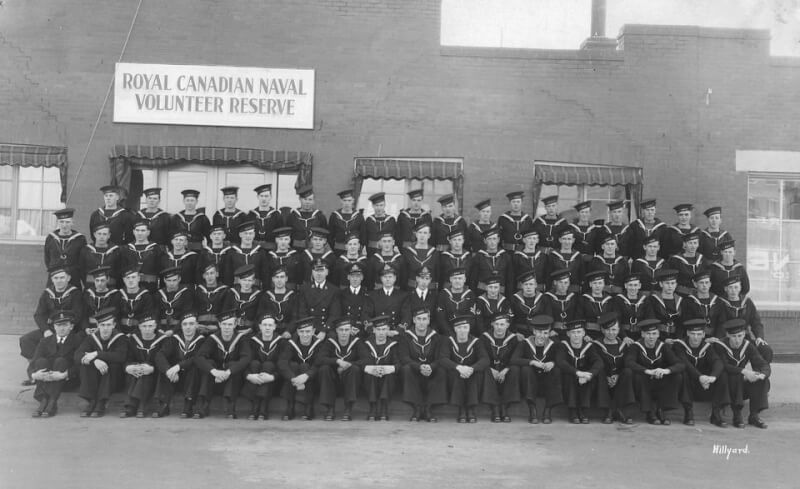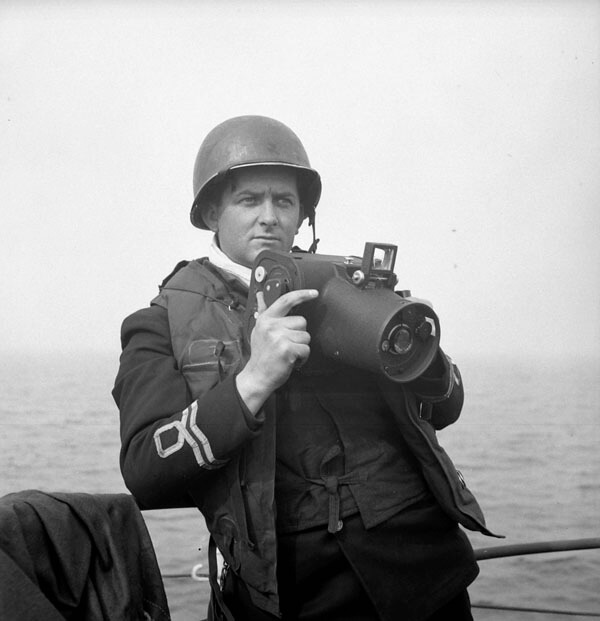
Members of the Royal Canadian Navy Volunteer Reserve. [Citizen Sailors Virtual Cenotaph Project]
Rear-Admiral Walter Hose created the RCNVR on Jan. 31, 1923, a time when the Navy was dealing with drastic budget cuts. Hose, however, believed volunteers could be the force’s lifeblood, and established Naval Reserve Divisions in cities throughout Canada. The RCNVR’s utility was put to the test come September 1939.
At the onset of the Second World War, droves of yachtsman and casual sailors volunteered for the service and were given minimal training before setting off to sea. The learning only really began when they joined Canada’s fleet of destroyers, minesweepers and their existing crews.

Lieutenant Gilbert A. Milne of the The Royal Canadian Navy Volunteer Reserve. [Wikimedia]
Before long, however, members of the RCNVR were as respected as their professional counterparts. They ensured the safe passage of 25,000 merchant ships and 165 million tonnes of supplies to England and beyond. Later absorbed by the Naval Reserve, the RCNVR helped Canada’s navy become the third largest in the world by the end of the war. “Those RCNVR boys,” said one RCNVR officer, “won Canada a good name.”
Advertisement





















